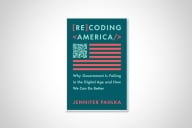You have /5 articles left.
Sign up for a free account or log in.
About 10 years ago, the guided pathways movement got its user’s manual. Redesigning America’s Community Colleges, by Thomas Bailey, Shanna Smith Jaggars and Davis Jenkins of the Community College Research Center at Columbia University’s Teachers College, was a sustained and well-received brief in favor of community colleges moving away from a “cafeteria” or “food court” model and toward a “guided pathways” model.
The idea was that the quasi-libertarian view that more choice is invariably good didn’t match the reality of most students’ lives; in fact, most students crave direction. Without clear direction, the argument went, students often flounder. They take credits that won’t transfer, get lost in remediation or drop out because they don’t see the point. Colleges should streamline their offerings—especially in remediation—and ensure that students get on pathways quickly and stay on them.
The book resonated. It picked up on the “completion agenda,” as it was known, and offered a series of steps that colleges could take to improve retention and graduation rates. It popularized “meta-majors,” subjected remedial courses to severe scrutiny and offered a unifying theme (and a brand name) to what could have looked like a disparate set of reforms.
To its considerable credit, the CCRC has subjected its own recommendations to empirical study. Now, with the benefit of 10 years’ worth of data, it has issued a follow-up. More Essential Than Ever, by Davis Jenkins, Hana Lahr, John Fink, Serena Klempin and Maggie Fay, looks closely at what happened as colleges implemented the recommendations of the earlier book. (Jenkins co-authored both the original and the follow-up.) The new book also takes stock of developments in the field in the last 10 years that weren’t focuses of the first book, including dual enrollment, short semesters and support for student basic needs.
Conceptually, the major innovation in the new book is the expansion of the goals of the guided pathways movement to include postgraduation outcomes. It looks primarily at labor market outcomes, though transfer also gets some attention. Instead of defining the task as getting students to graduation, the new book defines the task as getting students credentials that will lead to salaries that can sustain families. Where a social work graduate and a nursing graduate may show up interchangeably in a graduation rate, the latter is much more likely to make a living wage.
Liberal arts/transfer degrees come in for considerable skepticism, on the grounds that they only help if students actually transfer. That struck me as a bit unfair—nursing degrees only help if students pass the NCLEX, too. Degrees have intended outcomes; using them off-label is taking a risk. That’s not unique to the liberal arts. As the book correctly notes, most of the jobs that pay family-sustaining wages require a bachelor’s degree or higher; in that light, seamless and effective transfer is very much a workforce initiative. Transfer degrees, used as intended, can open doors to those jobs.
The new book is a follow-up, and it reads like one. Although there’s a helpful synopsis of earlier recommendations in the beginning, the book likely makes the most sense if the reader is familiar with both the earlier work and the world of community colleges generally. This one is very much for practitioners. That makes it somewhat less fun to read, but probably more useful.
I read it with a pen and dog-eared too many pages. It makes compelling arguments for embedding academic advisers in specific majors, helping students identify career goals early, adopting a case-management model of advising, ensuring that students get at least one identifiably goal-relevant or exciting class in the first semester, assessing academic programs’ labor market outcomes and supporting contextualized teaching, among other possibilities. I was particularly struck at the observation that changing the culture of an institution takes steady leadership and that it’s reasonable to expect full-scale change to take five to 10 years. In a time of rapid presidential and cabinet turnover, that’s a big ask. Having seen the damage that rapid turnover can do, though, I think they’re right.
The specific measures are, for me, the highlights of the book. They’re the reason I plan to keep my copy near my desk. True to the CCRC’s mission as a research center, the authors back up their recommendations with ample citations, as well as narrative case studies. It’s dense in the best way: The ratio of useful ideas per page is off the charts. It looks like a trade paperback, but I’d file it under reference.
Of course, no book is perfect. I would have liked to see a deeper discussion of internal resistance, for example, as well as the impact of high turnover and low pay among adjuncts on aspirations for more adventurous teaching.
Those are questions of emphasis. The one substantive flaw I couldn’t write off as a stylistic choice is its chapter on dual enrollment. In arguing for more career-focused dual enrollment, the book neglects the key role of dual credit in ensuring that students graduate high school on time. It underplays questions of funding—in a parent-pay state like my own, the absence of financial aid effectively prices dual enrollment out of possibility for many students—and treats questions of faculty credentials much more blithely than they deserve. In a largely flattering profile of the dual-enrollment program at Lee College in Texas, they note approvingly that the college addressed concerns about ninth graders making career choices by urging them to just “pick something to try out,” which comes dangerously close to the “random acts of dual enrolment” they otherwise advise against (p. 144). And they ignore the reality of credit loss upon transfer after dual enrollment when students decide to change majors upon arrival to college. I’ve seen it myself; the disappointment is real.
Still, this is likely to be one of the most referred-to, useful, practical books for improving student success for a long time. It stands as a testimony to what a funded community college research center can do; although it wasn’t conceived this way, it makes for a hell of a counterargument to the claim that research funds aren’t necessary. In this political moment, the CCRC’s work is more essential than ever; the book’s title couldn’t have been better chosen.



